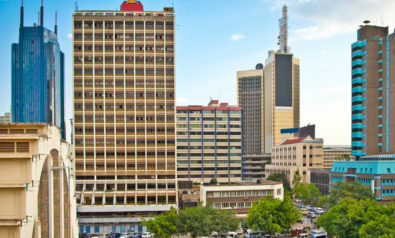With the second youngest population in the world, what confronts youth in North Africa’s job market?
The dire economic situation in North Africa moved into the spotlight when Mohammed Bouazizi, a young Tunisian fruit vendor, set himself alight on December 17, 2010, sparking revolts that shook dictators from Algeria to Yemen. While causes behind the uprisings were complex, encompassing decades of authoritarianism, corruption and human rights abuses, economic factors were and still remain a crucial element in North African society and politics.
In 2012, the Middle East and North Africa (MENA) saw the highest youth unemployment rate in the world, with approximately 25% of 15-24 year olds out of work. High population growth rates plague the region, with half of its citizens under 25. The MENA region has the second youngest population after sub-Saharan Africa. As noted by Abul-Hasanat Siddique and Casper Wuite: “The youth population, aged 15 to 24, is growing explosively — it increased by nearly 44 million between 1980 and 2010.” Given these demographics, fostering youth employment strategies has to be a top priority for North African policymakers, civil society and business leaders.
Egypt, the most populous country in North Africa, had an unemployment rate of 13.4% in December 2013, with 69% of those unemployed aged between 15-29. Notably, university graduates have particularly suffered from a shortage of jobs. Egypt also illustrates the gender dimension of this employment issue: 10% of men and 25% percent of women were unemployed in 2013.
There are a variety of factors that shape the economic situation in North Africa. First, with the aforementioned youth bulge and unemployment, finding a suitable place to live and starting a family has become problematic. Such conditions led to the Arab Uprisings in 2010-11. Second, outdated education systems are in dire need of reform. As noted by International Monetary Fund (IMF) experts: “Unusually, education in this region is not a guarantee against unemployment.” This is not only related to the inability of economies to create highly skilled work, but also outdated education systems that fail to keep up with modern industries. Consequently, graduates often do not possess the necessary skills in demand, a fact cited by employers as a crucial restraint to hiring. Third, due to bureaucratic hurdles and deteriorating security, foreign direct investment in the region is on the decline. Further, entrepreneurship is restricted due the “heavy hand of the state,” resulting in disincentives for youth to start their own businesses. The end result is unemployment and underemployment.
To talk more about youth employment in North Africa, the challenges ahead and the role of social entrepreneurship, Fair Observer’s Manuel Langendorf and Abul-Hasanat Siddique speak to Iman Bibars, the regional director for Ashoka Arab World. Ashoka is the largest network of social entrepreneurs worldwide, with nearly 3,000 fellows in 70 countries.
Abul-Hasanat Siddique: Like sub-Saharan Africa, North Africa sees a large youth bulge of people between 15-30 years old. Many of them have lost faith in their governments’ economic policies — 26% of Arab youth want to leave their country of origin to seek opportunities elsewhere, according to Silatech. What has led to unemployment and underemployment in North Africa?
Iman Bibars: The countries of North Africa, like many other nations on the African continent and some in the Levant and the Gulf, face enormous challenges in terms of the levels of unemployment and underemployment they experience. There are several, linked, reasons for this.
To begin with, the education systems in many North African countries are in urgent need of reform. Not only does there need to be more emphasis on skills acquisition as opposed to rote learning, but education must respond to the needs of the market. Currently, this does not happen, so what we end up with are a huge number of young university graduates who have spent their lives in full-time education, but who are completely out of sync with the job market. The disillusionment experienced by these graduates is often due to the sheer amount of time and effort they have invested in their education, only to find upon graduating that there are very few jobs available that match their aspirations and belief in what they deserve.
Another linked problem is that the emphasis our education systems place on rote learning breeds generation after generation of young people who expect to be spoon-fed. They are not taught to think analytically and they are not taught to innovate. They are not taught that if one approach to solving a problem does not succeed, they should try another. They are not brought up to be tenacious and persistent, or to seek creative ways of obtaining educational opportunities or professional experience.
The youth bulge that our countries are experiencing is part of a surge in population in North African countries; between 1950 and 2000, the population of the MENA region increased 3.7 times, more than any other world region. This is due to a number of factors, many of which are exacerbated by poverty and poor health and reproductive education. There is no concurrent increase in job opportunities for young people. In fact, the provision that nation states frequently attempt to make for the increase in jobseekers often leads to a bloating of the civil sector, which slows down the effectiveness of the state to support its citizens effectively.
Closely linked to this is the fact that our economies are not expanding. Again, this is often linked to government economic policy, and decisions that have been made by governments to try generate funds, which actually end up limiting the growth of particular sectors within countries in the region.
Once again, bloated civil sectors can negatively affect economic growth; poor educational systems mean that even our best and brightest do not necessarily match the needs of the job markets they seek to enter; and all of these problems are continually exacerbated by an ever-growing population, and increasing demands on the state to support its citizens. High — and increasing — levels of poverty mean that our poorest citizens are ill-equipped to contribute positively to their countries, and instead a lack of education and poor health means they are often utterly dependent on their governments for support, even to subsist.
Manuel Langendorf: In the long-run, what role can the public and private sectors play in job creation?
Bibars: Both the private sector and the public sector have important roles to play, and the roles of each must complement the other.
The public sector must make it an absolute priority to improve the education system and really reform it comprehensively. Teachers must be well-trained, so they acquire skills, knowledge and a passion for nurturing students and teaching them to think analytically and creatively. Schools should be equipped with the resources to enable academic learning to be more interactive and creative. Class sizes should be smaller and all students should have access to reading material and, if possible, the Internet. The ecosystem should be altered so that demand is created for interactive learning — so that students are encouraged to ask questions, read and think about the world around them, acquire technical and effective communication skills, and cultivate essential personal qualities such as flexibility, persistence and a desire to continuously learn new professional skills. The learning culture needs to move away from valuing university qualifications because of their prestige, and toward facilitating the acquisition of practical skills — whether these are academic, vocational, technical or the “soft skills” of communication — in a way that is carefully tailored to the job market.
In 2012, the Middle East and North Africa (MENA) saw the highest youth unemployment rate in the world, with approximately 25% of 15-24 year olds out of work. High population growth rates plague the region, with half of its citizens under 25. The MENA region has the second youngest population after sub-Saharan Africa.
— Manuel Langendorf & Abul-Hasanat Siddique
In Egypt, unemployment tends to be highest among young, middle-class graduates, who often cannot find jobs that match their aspirations, but who have families that can support them financially. In poor and rural areas, different factors are at work. The level of education tends to be much lower and young people are likely to leave school earlier to engage in unskilled labor to contribute to their families’ income. In these more conservative areas, girls’ education is often not regarded as a priority — for both economic and cultural reasons. Where possible, the government should offer incentives for young people from such communities to continue their education, and offer training programs for them to learn trades to obtain vocational employment, increasing their economic prospects.
The private sector, meanwhile, must create more jobs. It is that simple. We need more jobs. There should be partnerships between the public and private sectors focused on job creation, and linking private sector organizations with educational institutions to bridge the gaps that I have spoken about in such detail. Private sector organizations should be encouraged to strengthen their links with communities in a way that links commercial success with knowledge transfer and professional training. This will entail building partnerships between companies and civil society organizations operating on the ground — especially those working with young people.
Siddique: What role does social entrepreneurship have in empowering youth in the region?
Bibars: Social entrepreneurship is by its very nature extremely empowering because it is naturally democratic and highly creative. Social entrepreneurs identify the root causes of problems within their communities and use innovative approaches to solve them. They see what is not working and they develop initiatives that solve the problems through systemic change. Their ideas and models are replicable — that is to say, rather than starting a nice project to treat the symptom of a social problem, social entrepreneurs focus on changing the underlying systemic cause of the problem.
As an idea and as a discipline, social entrepreneurship has the ability to transform lives and to effect meaningful social change as no charitable or philanthropic work can. It involves adopting a highly practical approach to social development, by supporting the people who have the tools to really address the root causes of endemic problems, so they are able to do so. It entails investing in the people who can identify the underlying issues that lead to social problems, and who use innovation to implement systemic change, in order to address those issues effectively and to eventually eradicate them.
Social entrepreneurs, such as Raghda and Mohammed, identify gaps and missing links at various stages of the value chain. Without them, these problems would go unsolved and the cumulative economic and social benefits associated with improved education and skills development of young people would be lost.
— Iman Bibars
This means investing in local solutions to local problems, but it also involves creating an enabling environment — an ecosystem — that spans countries, that crosses barriers of language, cultural difference, political affiliation, religion and class. All entrepreneurs — whether they are focused on the business sector or the social sector — share certain essential qualities. A true entrepreneur seeks to expand their market. An entrepreneur thinks outside of the box and is an innate problem solver. They are passionate about their initiative — a passion that might be termed obsessive — and will not rest until they have turned it from an innovative idea into a reality that is transforming people’s lives. Look at the historical figures who have seen opportunities where others have only seen challenges, who have seized the opportunity to expand their market and drive their idea — Steve Jobs, Bill Gates or Naguib Sawiris. These are entrepreneurs.
To invest in and support social entrepreneurs constitutes a long-term investment in addressing and solving the root causes and underlying phenomena of social and economic issues, which will eventually create thriving, solution-focused communities. This leads to valuable long-term social and economic returns. This is why Ashoka, the platform for social entrepreneurship, is utterly committed to finding and supporting the world’s leading social entrepreneurs — the most excellent, the most innovative, the most inspiring and the most hardworking.
Raghda El Ebrashi, an Ashoka Arab World Fellow, is creating employment opportunities for marginalized youth in Egypt by bridging the gap between the social sector and the business sector. She trains and matches prospective employees from communities that are without access to the labor market with corporations. Her organization, Alashanek Ya Balady (AYB), focuses on skills provision to potential employees, based on the needs of the business sector, as well as creating income generation opportunities in the informal sector. As such, she is helping to create a cadre of prospective employees trained in the skills they need to find work — which is more practical, more viable and more cost effective than attempting to reform the entire education sector.
Another Ashoka Fellow, Mohammed Abbad Andaloussi, is likewise helping to bridge the gap between the education system and the business sector in Morocco, facilitating collaborations between the two to provide students with higher quality, market-relevant education to maximize their professional success. By ensuring that business organizations partner with schools, providing their expertise and tools to enhance the education and services provided to students, Mohammed is creating a market in which business leaders see the value of a true investment in the education system, undertaken for practical rather than charitable or philanthropic purposes. At the same time, he is catalyzing a change within educational bodies, so they focus on equipping students with the skills they need to be professional leaders in an increasingly globalized world.
Social entrepreneurs, such as Raghda and Mohammed, identify gaps and missing links at various stages of the value chain. Without them, these problems would go unsolved and the cumulative economic and social benefits associated with improved education and skills development of young people would be lost.
*[Read the final part here. Continue the conversation in a Webinar and concurrent Twitter chat convened by Ashoka’s Future Forward initiative, in partnership with the MasterCard Foundation. The initiative finds, supports and accelerates innovative solutions for youth employment in Africa, and will be holding a live panel conversation and concurrent Twitter chat on October 9 at 12:30pm (ET) using the hashtags #AfricaYouthFwd and #SocEntChat.]
The views expressed in this article are the author’s own and do not necessarily reflect Fair Observer’s editorial policy.
Support Fair Observer
We rely on your support for our independence, diversity and quality.
For more than 10 years, Fair Observer has been free, fair and independent. No billionaire owns us, no advertisers control us. We are a reader-supported nonprofit. Unlike many other publications, we keep our content free for readers regardless of where they live or whether they can afford to pay. We have no paywalls and no ads.
In the post-truth era of fake news, echo chambers and filter bubbles, we publish a plurality of perspectives from around the world. Anyone can publish with us, but everyone goes through a rigorous editorial process. So, you get fact-checked, well-reasoned content instead of noise.
We publish 2,500+ voices from 90+ countries. We also conduct education and training programs
on subjects ranging from digital media and journalism to writing and critical thinking. This
doesn’t come cheap. Servers, editors, trainers and web developers cost
money.
Please consider supporting us on a regular basis as a recurring donor or a
sustaining member.
Will you support FO’s journalism?
We rely on your support for our independence, diversity and quality.






















Comment